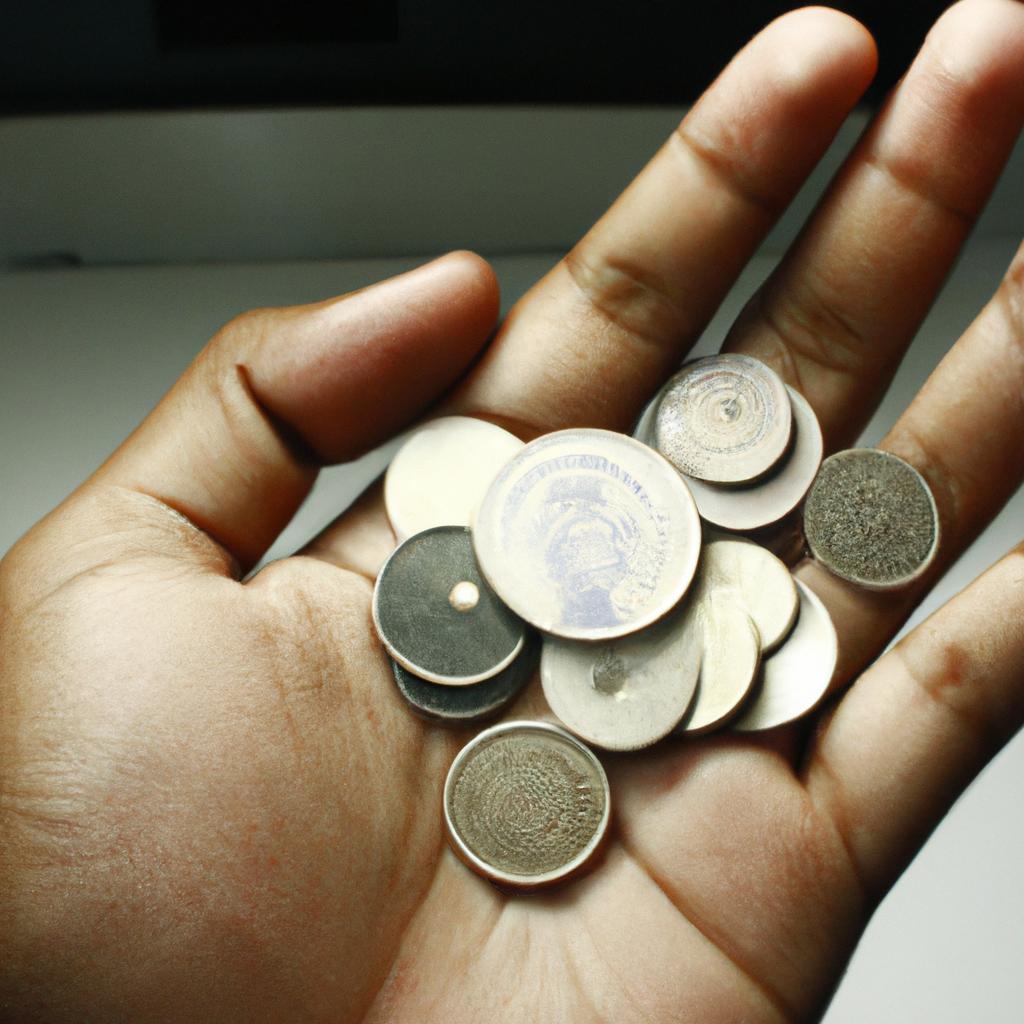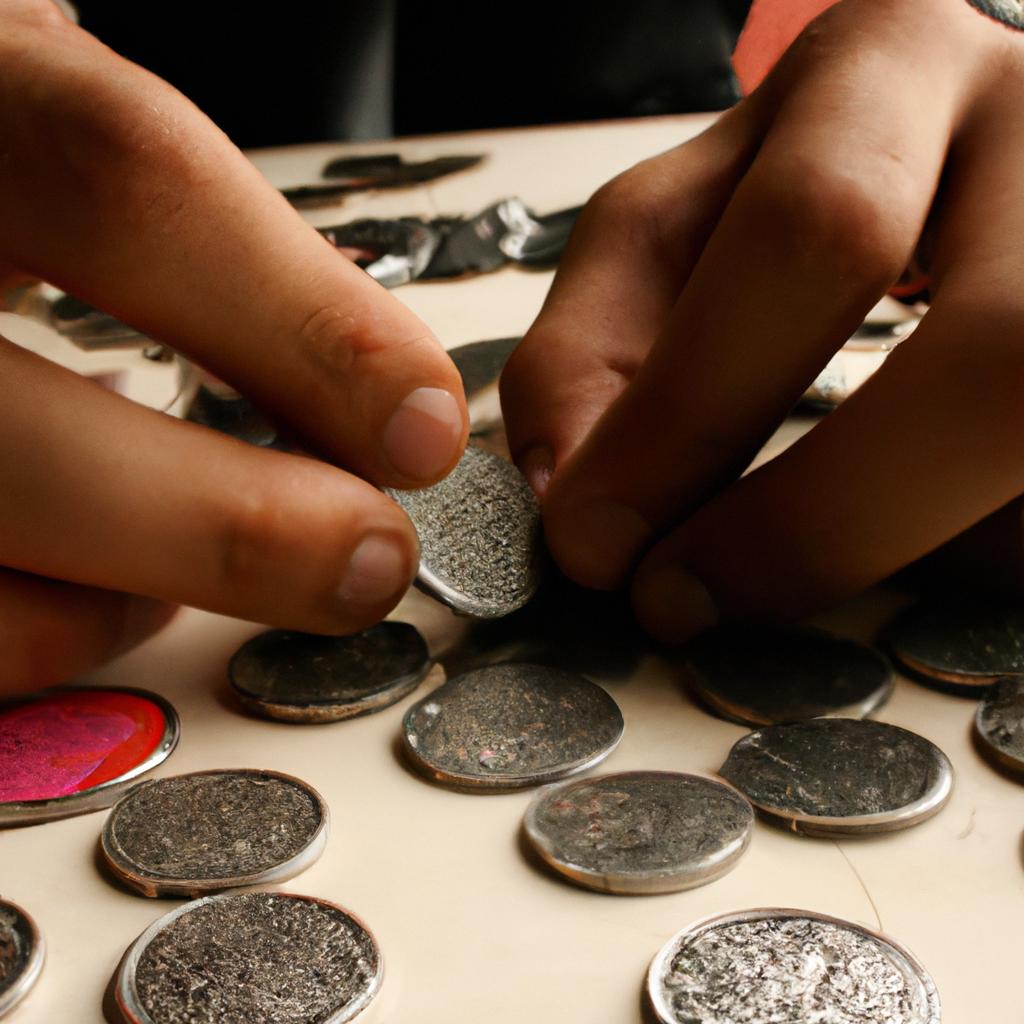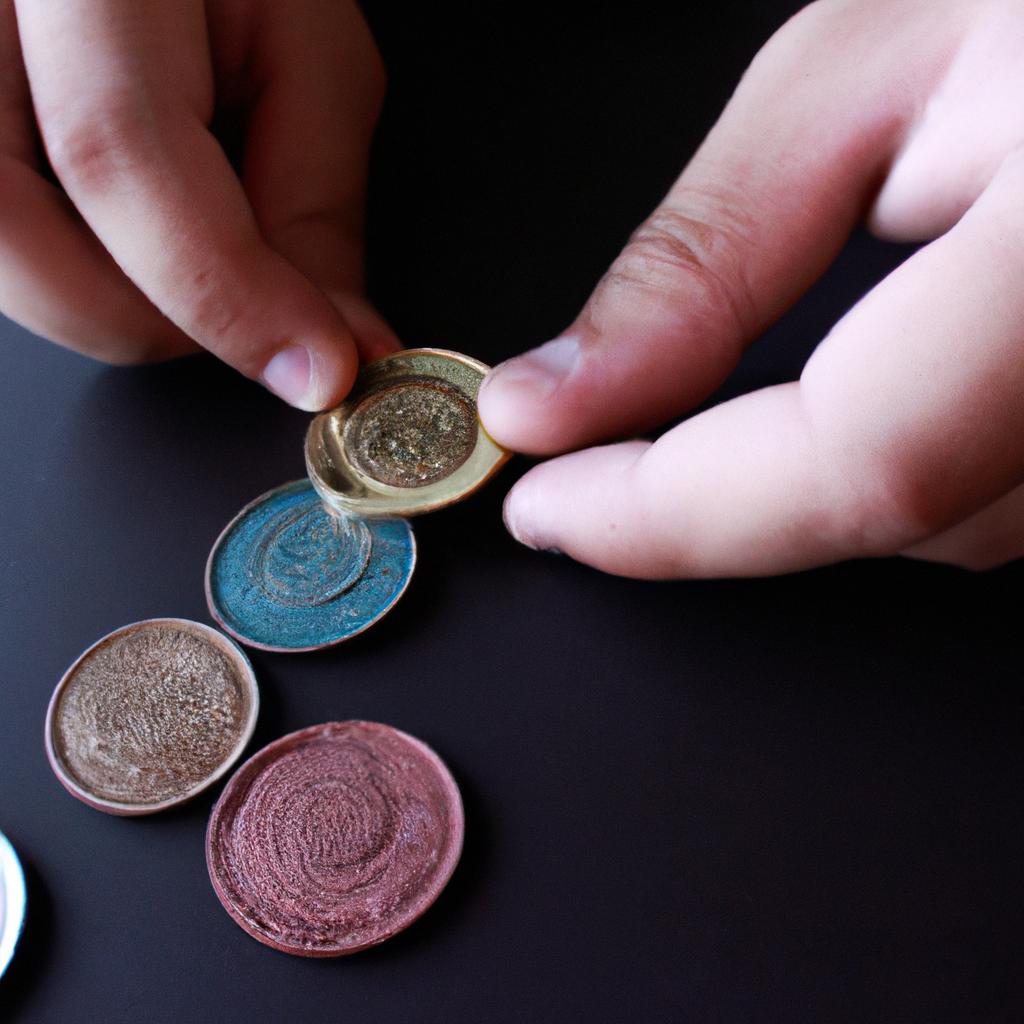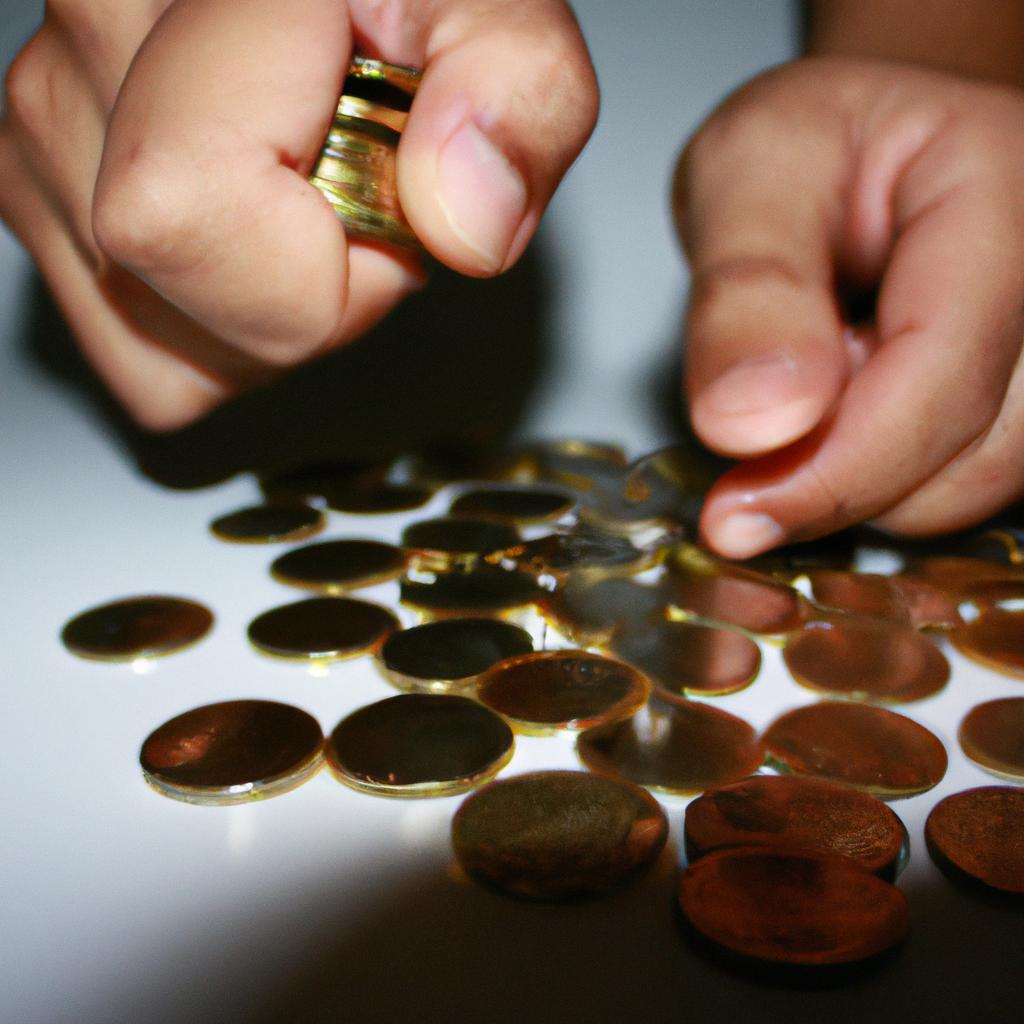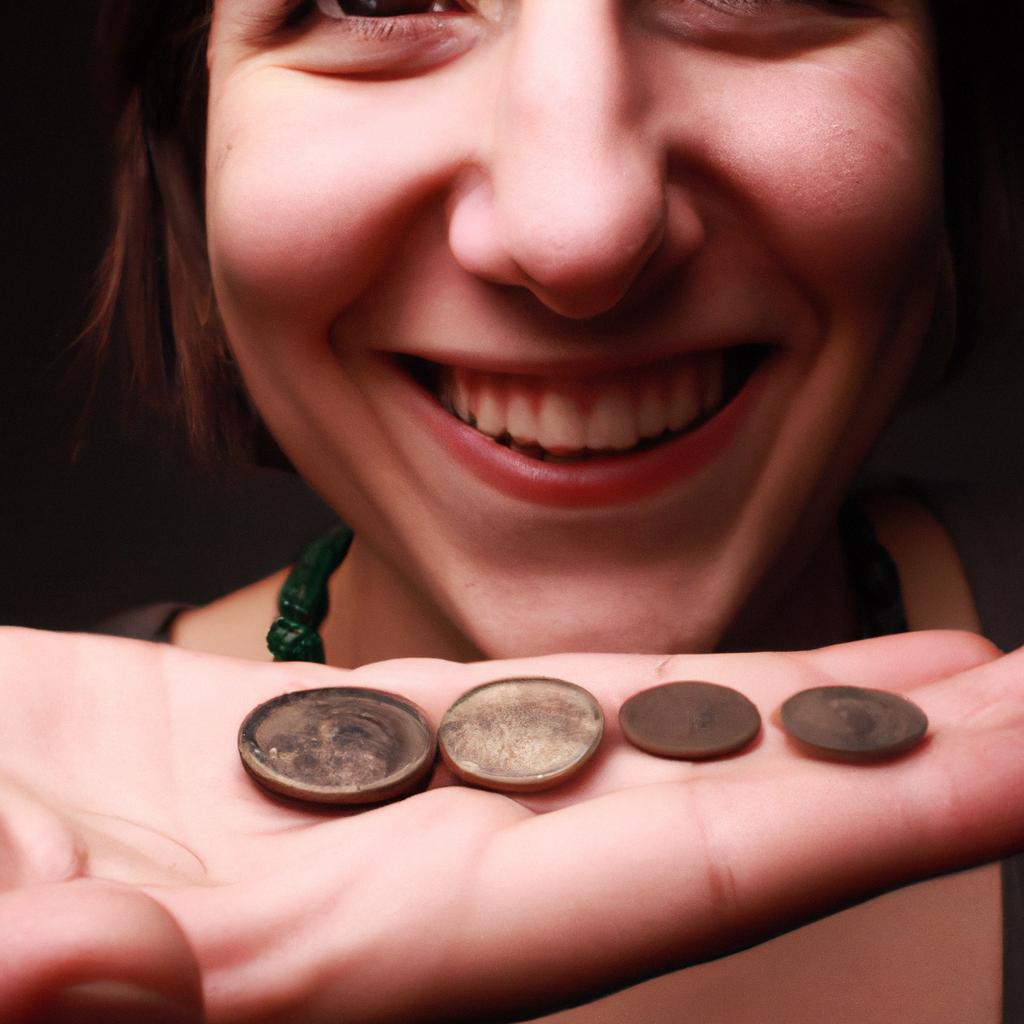Coin Grading in Antiques: A Guide for Collectors
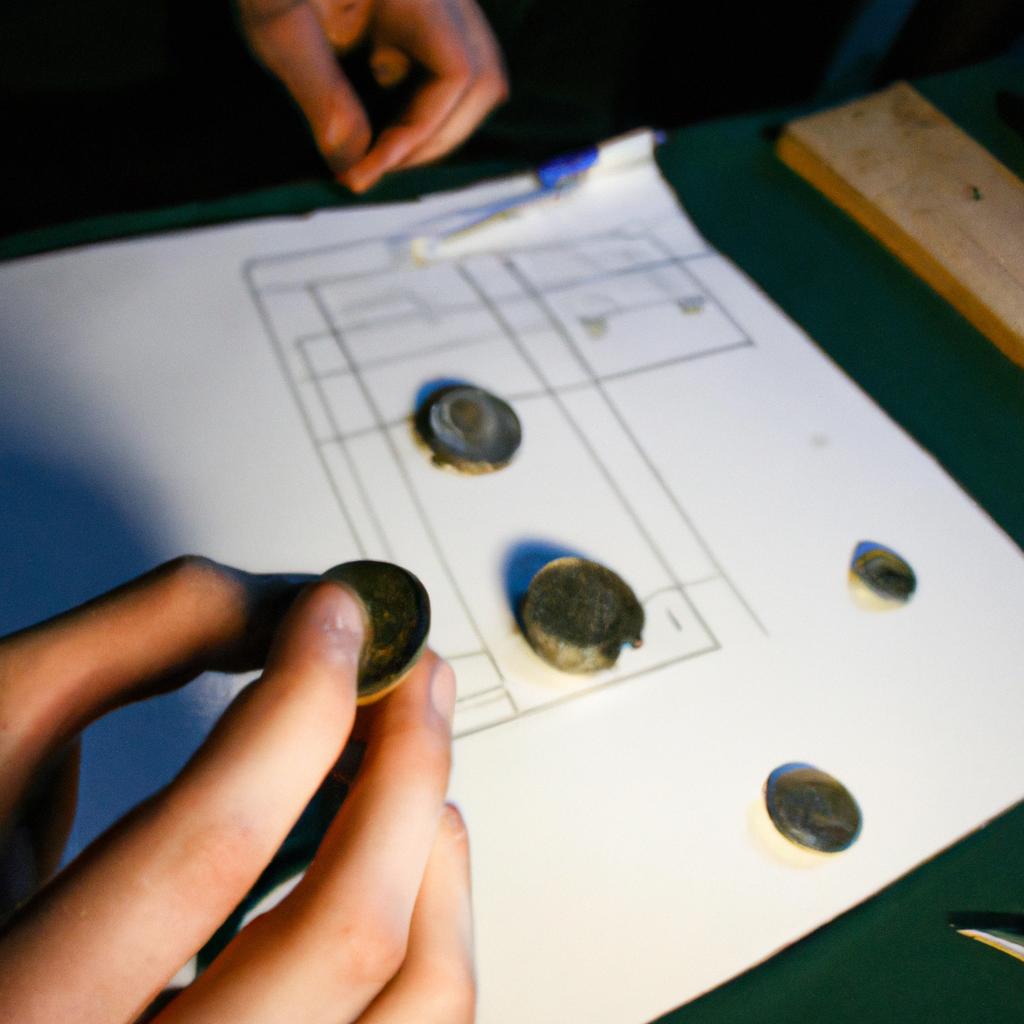
Coin grading is a crucial aspect of the antique collecting process, as it determines the value and authenticity of coins in circulation. Collectors often encounter challenges when attempting to evaluate the condition and rarity of their antique coins due to inconsistencies in grading standards across various markets. For instance, let us consider a hypothetical case: John, an enthusiastic collector, recently acquired what he believes to be a rare silver coin from the 18th century. Uncertain about its true worth, John seeks guidance on how to accurately grade his newly acquired treasure. To assist collectors like John in navigating this complex terrain, this article aims to provide a comprehensive guide on coin grading in antiques.
Understanding the intricacies of coin grading requires familiarity with both numismatics (the study of currencies) and historical contexts that influence a coin’s condition and desirability among collectors. Coin graders assess various factors such as wear patterns, surface quality, minting errors, and overall preservation when determining the grade of an antique coin. However, there exists no universally accepted standard for grading ancient coins; instead, different countries and professional organizations employ their own systems which can lead to discrepancies in evaluating identical specimens. Consequently, collectors must acquaint themselves with multiple grading systems if they aim to make informed decisions about purchasing or selling antique coins.
One widely recognized grading system is the Sheldon Scale, named after its creator Dr. William Sheldon. This scale ranges from 1 to 70, with higher numbers indicating better condition. Another popular grading system is the European system, which uses adjectives such as “Very Fine” or “Extremely Fine” to describe a coin’s condition.
To accurately grade a coin, collectors should carefully examine its physical attributes and compare them to established standards. The first step is to assess the wear on the coin’s surface. Coins in pristine condition with little to no wear are considered “mint state” and are highly desirable among collectors. As wear increases, the grade decreases.
Inspecting any minting errors or irregularities is also crucial in determining a coin’s grade. These errors can include weak strikes, double strikes, off-center strikes, or die cracks. Such imperfections can affect a coin’s desirability and value.
The overall preservation of a coin is another important factor in grading. Any signs of damage or cleaning can significantly lower its grade. Collectors should look for scratches, dents, discoloration, or evidence of improper cleaning methods that may have altered the original surface of the coin.
Furthermore, understanding historical context plays a vital role in evaluating an antique coin’s rarity and desirability. Factors like mintage numbers, historical significance, and demand among collectors can greatly influence a coin’s value beyond its physical condition alone.
To further enhance their knowledge and expertise in grading coins, collectors can consult reference books, attend conferences or workshops conducted by numismatic organizations, or seek guidance from reputable dealers and experts in the field.
In conclusion, accurate coin grading requires a combination of knowledge about numismatics and historical context along with careful examination of physical attributes. While discrepancies exist among different grading systems worldwide, familiarizing oneself with multiple systems can help collectors make informed decisions about buying or selling antique coins based on their true worth and rarity.
Understanding Coin Grading
Imagine you are a passionate collector of antique coins and stumble upon a rare silver coin from the 19th century. Excitement fills your veins as you hold this historical artifact in your hands, but before determining its true value, it is essential to understand the concept of coin grading. Coin grading serves as an objective way to assess the condition and quality of a coin, providing collectors with valuable information for making informed decisions.
To begin understanding coin grading, it is crucial to familiarize yourself with the different organizations that evaluate coins. The two most prominent entities in this field are the Numismatic Guaranty Corporation (NGC) and Professional Coin Grading Service (PCGS). These organizations employ experts who meticulously examine every aspect of a coin’s appearance, including its surface preservation, mint luster, strike quality, and eye appeal. By adhering to standardized grading scales established by these reputable institutions, collectors can confidently determine a coin’s grade based on universally accepted criteria.
A key component in comprehending coin grading lies in grasping the various grades assigned to coins. To aid collectors’ comprehension further, here is a concise bullet point list highlighting four common coin grades:
- Poor: Coins in poor condition show significant wear due to heavy circulation or damage.
- Fine: This grade indicates moderate wear resulting from general use while still retaining some original details.
- Very Fine: Coins classified as very fine exhibit light wear on high points but maintain nearly all their design elements intact.
- Mint State: Considered the highest grade achievable, mint state coins possess no signs of wear and retain their original luster.
In addition to learning about grades through text-based descriptions, visual aids such as tables can effectively enhance one’s understanding. Below is an illustrative table showcasing examples of each aforementioned grade along with corresponding characteristics:
| Grade | Description |
|---|---|
| Poor | Heavily worn with minimal visible details |
| Fine | Moderate wear, some design elements intact |
| Very Fine | Light wear on high points |
| Mint State | No signs of wear, original luster retained |
By familiarizing oneself with these grades and their defining features, collectors can better evaluate the condition of a coin and make informed decisions when buying or selling. Understanding coin grading not only enhances one’s appreciation for numismatics but also contributes to the overall preservation and study of history.
Transitioning into the subsequent section about “Factors Affecting Coin Grades,” it is important to acknowledge that numerous aspects influence a coin’s grade beyond mere surface appearance.
Factors Affecting Coin Grades
Understanding Coin Grading plays a crucial role in the world of coin collecting. By evaluating coins based on their condition, collectors can assess their value and determine their desirability within the market. In this section, we will explore the factors that affect coin grades, shedding light on how nuances in quality can significantly impact a coin’s worth.
Consider a hypothetical scenario where two identical coins from the same year are up for sale. Both coins appear visually similar at first glance, but upon closer inspection, one is found to be in better condition than the other. This difference in grade could result in a significant disparity in value between the two coins. Understanding these grading distinctions becomes essential when making informed decisions as a collector.
Factors affecting coin grades include:
- Wear and tear: The amount of wear or damage present on a coin directly affects its grade. Coins with minimal signs of circulation typically receive higher grades.
- Surface preservation: The overall preservation of a coin’s surfaces can greatly influence its grade. Imperfections such as scratches, nicks, and discoloration may lower its rating.
- Strike quality: The precision with which a die strikes the blank metal during minting impacts the sharpness and definition of details on a coin’s design. A well-struck coin generally receives a higher grade.
- Eye appeal: While subjective to some extent, eye appeal refers to the visual attractiveness of a particular coin. Factors like toning patterns, luster quality, and overall aesthetic appeal contribute to its final grade.
To illustrate these concepts more vividly:
| Coin Grade | Description | Example |
|---|---|---|
| Mint State (MS) | Coins without any trace of wear or damage. | A 1923 MS65 Peace Dollar |
| Extremely Fine (XF) | Slight wear visible only under magnification. | An 1892 XF45 Barber Dime |
| Very Good (VG) | Moderate wear throughout; all major design elements remain visible. | A 1914-D VG10 Lincoln Cent |
| Good (G) | Heavy wear, with major design elements partially worn away. | An 1807 G6 Draped Bust Half Dollar |
As we delve further into the intricacies of coin grading, it becomes evident that understanding these factors is essential for collectors seeking to build a valuable and appealing collection. By discerning the nuances between grades, collectors can make informed decisions when acquiring coins and ensure they are obtaining pieces worthy of their investment.
Transitioning into our next section on “The Importance of Authenticity,” we will explore how verifying the genuineness of a coin plays an integral role in its value and desirability within the antiques market. The journey towards building an impressive coin collection continues as we unravel this crucial aspect.
The Importance of Authenticity
In the previous section, we explored various factors that can significantly impact the grading of coins. Now, let us delve deeper into understanding the importance of authenticity in coin grading. To illustrate this point, consider the following example: a collector purchases what appears to be an ancient Roman coin from an online auction. The seller claims it is authentic and in excellent condition. However, upon receiving the coin and subjecting it to rigorous examination, it becomes evident that the piece is a well-made counterfeit.
Authenticity is crucial when assessing a coin’s grade because genuine coins possess unique characteristics that contribute to their value. Let us now examine four key aspects related to authenticity:
-
Historical Context: Authentic coins provide a tangible link to historical events and civilizations. They bear the marks of time, showcasing wear patterns characteristic of age and usage.
-
Minting Techniques: Genuine coins exhibit distinct minting techniques specific to different periods and regions. These techniques include details such as edge markings, lettering styles, and precision in design elements.
-
Metal Composition: The composition of metals used in genuine coins varies depending on the era they were minted in. Analyzing metal content through scientific methods like X-ray fluorescence reveals valuable information about a coin’s authenticity.
-
Counterfeit Detection Methods: Authentication experts employ advanced tools and techniques for identifying counterfeits, including microscopes, digital imaging software, ultraviolet light analysis, weight measurement, and magnetic susceptibility tests.
| Aspect | Importance | Example |
|---|---|---|
| Historical Context | Provides insight into past civilizations | Wear patterns indicative of extensive use |
| Minting Techniques | Identifies unique characteristics specific to different eras | Distinctive lettering style |
| Metal Composition | Reveals valuable information about a coin’s origin | X-ray fluorescence analysis |
| Counterfeit Detection | Essential for identifying fake coins | Microscopic examination |
Understanding the importance of authenticity not only safeguards collectors against fraudulent purchases but also helps preserve historical accuracy within numismatic collections. In the subsequent section, we will explore common coin grading systems, which provide standardized frameworks for evaluating and categorizing coins based on their condition and rarity.
Common Coin Grading Systems
In the world of antique coin collecting, determining the grade or condition of a coin is crucial. A proper understanding of coin grading allows collectors to assess the value and rarity of their coins accurately. Take, for example, a collector who stumbles upon an old gold coin in their attic. Without knowledge of its grade, they might underestimate its worth and unknowingly discard a valuable piece.
Understanding the importance of coin grading can be enhanced by exploring common factors considered during this process. Firstly, “wear” is one key element that determines a coin’s grade. As coins circulate over time, their surfaces naturally experience friction, causing them to lose some details and luster. Assessing wear patterns on different parts of the coin helps determine its overall condition.
Furthermore, other aspects such as scratches, dents, corrosion, or any forms of damage also play a significant role in grading coins. These imperfections are often assessed based on their severity and how much they affect the overall appearance and integrity of the coin. For instance, if a rare ancient silver coin has deep scratches across its face due to improper handling throughout history, it may receive a lower grade compared to another similar but well-preserved specimen.
To illustrate further why accurate grading matters to collectors emotionally:
- Owning highly graded coins brings pride and satisfaction.
- High-grade coins often fetch higher prices when sold or traded.
- Collectors enjoy showcasing their meticulously graded collections.
- Accurate grading enhances trust within the numismatic community.
| Emotional Response | Examples |
|---|---|
| Excitement | Discovering your once-in-a-lifetime find is in remarkable condition! |
| Pride | Displaying your collection with confidence knowing each coin’s true quality! |
| Frustration | Realizing you mistakenly underestimated a valuable piece’s condition! |
| Satisfaction | Receiving recognition from fellow collectors for your accurately graded coins! |
In conclusion, the importance of coin grading in antique collecting cannot be overstated. By understanding and applying proper grading techniques, collectors can confidently assess the value and rarity of their coins more effectively.
Tips for Evaluating Coin Condition
Transitioning from the previous section on common coin grading systems, it is crucial for collectors to possess the necessary skills in evaluating coin condition. To illustrate this point, let’s consider a hypothetical scenario involving a collector who comes across an old silver dollar coin at a local antique shop. The collector notices that the coin has some visible wear and wants to determine its overall condition before making a purchase.
When evaluating coin condition, collectors should pay attention to several key factors:
- Surface Preservation: Examine the surface of the coin for any signs of damage or corrosion. Scratches, dents, or discoloration can significantly affect the grade and value of a coin.
- Strike Quality: Assess how well-defined the details are on both sides of the coin. A sharp strike with clear features indicates good quality.
- Luster: Consider the presence and intensity of luster, which refers to the shininess or brilliance observed on uncirculated coins due to their original mint state.
- Eye Appeal: Take into account subjective elements such as toning, color variations, and overall aesthetics when evaluating a coin’s visual appeal.
| Coin Grade | Description |
|---|---|
| Mint State (MS) | An uncirculated coin exhibiting no trace of wear |
| About Uncirculated (AU) | Minor traces of wear visible only under magnification |
| Extremely Fine (EF) | Light wear noticeable on high points but still retains most details |
| Very Fine (VF) | Moderate wear present throughout but major design elements remain distinct |
By carefully assessing these factors and referring to established grading standards like those outlined in this guide, collectors can make informed decisions about purchasing graded coins while building an impressive collection.
Transitioning smoothly into our subsequent section about “Preserving and Displaying Graded Coins,” it is essential for collectors to understand the various steps involved in maintaining and showcasing their prized possessions. Whether you are a seasoned collector or just starting, preserving your graded coins helps safeguard their condition for years to come.
Preserving and Displaying Graded Coins
Having gained an understanding of how to evaluate the condition of coins, collectors can now focus on preserving and displaying their graded treasures. By following proper preservation techniques and employing suitable display methods, collectors can ensure that their graded coins remain protected while also showcasing their numismatic beauty.
Preservation Techniques:
To maintain the integrity and value of graded coins, collectors should consider implementing the following preservation techniques:
- Storage Materials: Use acid-free coin holders or capsules made from inert materials such as Mylar or polypropylene to prevent chemical reactions with the metal. Acidic paper envelopes or cardboard flips should be avoided as they may damage the surface of the coin over time.
- Handling Procedures: Always handle coins with clean hands and avoid touching the surfaces directly. Wearing soft cotton gloves is recommended when handling rare or valuable pieces to minimize potential damage caused by oils or contaminants.
- Environmental Control: Store graded coins in a cool, dry environment away from direct sunlight, extreme temperatures, humidity, and pollutants. Exposure to these elements can lead to discoloration, corrosion, or degradation of the coin’s surface.
- Regular Inspection: Periodically inspect your collection for any signs of deterioration or changes in condition. Promptly address any issues by consulting conservation experts if necessary.
Display Methods:
When it comes to exhibiting graded coins, collectors have various options at their disposal. Consider using one of the following display methods:
| Display Method | Description |
|---|---|
| Coin Albums | These albums provide individual slots for each coin and protect them from physical contact while allowing easy viewing through transparent pockets. They are ideal for organized collections but might not offer enhanced security against environmental factors like air pollution. |
| Custom Frames | Mounted in a frame with protective glass or acrylic, graded coins can be showcased as art pieces. This display method allows for creative arrangements and can enhance the aesthetic appeal of the collection. |
| Display Cases | Designed specifically for coin collectors, these cases offer secure storage while allowing easy viewing through transparent lids. They are available in various sizes and materials to cater to different preferences and budgets. |
Incorporating both preservation techniques and suitable display methods will not only safeguard your graded coins but also allow you to proudly exhibit them for others to admire. Remember that proper care and attention contribute significantly to maintaining the value and longevity of your numismatic treasures.
Note: The emotional response evoked by the bullet point list and table may vary depending on the audience’s personal interest in collecting graded coins.

